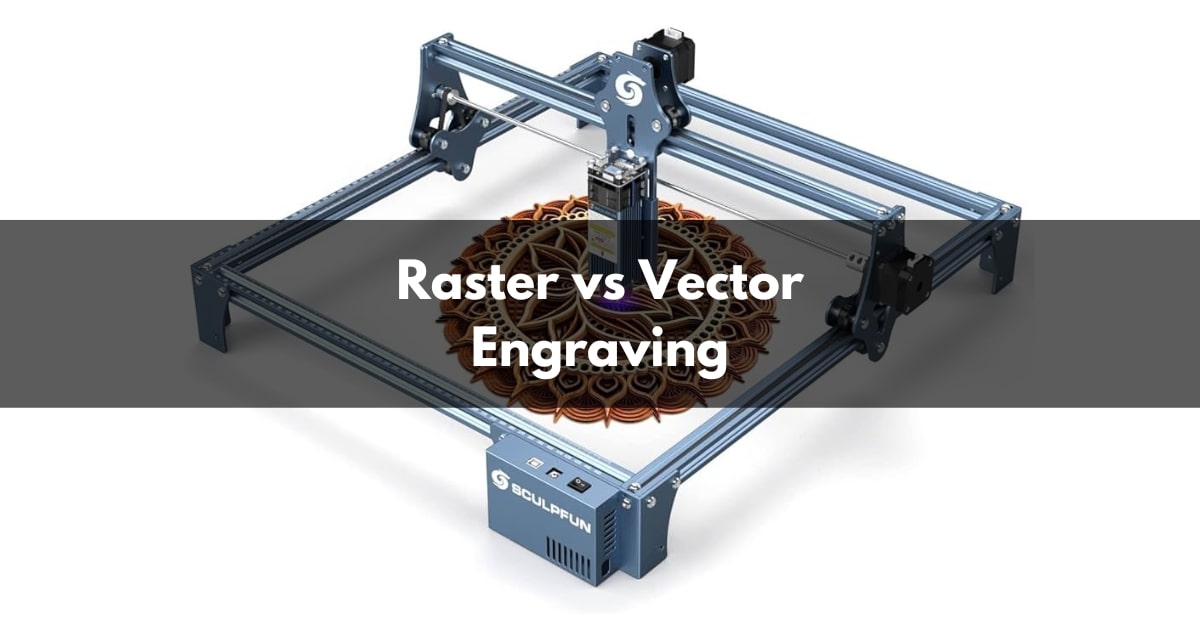In the realm of engraving, the choice between raster and vector techniques holds immense significance, in determining the precision, quality, and adaptability of the final engraved output. Understanding the differences between raster and vector engraving techniques is pivotal for artisans, designers, and industries seeking impeccable and versatile engraving results. This article aims to elucidate the nuances, benefits, and applications of raster vs. vector engraving techniques.
Distinguishing Raster and Vector Engraving
- Raster Engraving: Raster engraving involves etching the surface through the use of pixels. The engraving machine interprets the image as a grid of pixels, burning or cutting based on the intensity of each pixel. This technique is ideal for intricate shading and fine details but may lack precision in crisp lines.
- Vector Engraving: Vector engraving utilizes mathematical equations to define shapes, lines, and curves. Engraving machines follow these precise mathematical paths, resulting in sharp, clean lines. This technique excels in creating precise outlines and shapes but might lack the subtlety of shading seen in raster engravings.
Key Differences and Benefits
- Precision and Detail: Vector engraving offers exceptional precision for sharp lines and defined shapes, while raster excels in capturing intricate details and shading nuances.
- Scalability and Adaptability: Vector engravings maintain clarity and sharpness even when resized, making them ideal for logos and designs requiring scalability. Raster engravings, however, may lose quality when scaled up.
- Processing Speed: Raster engraving can be slower due to the processing of individual pixels, while vector engraving processes mathematical equations, often resulting in faster engraving times.
Applications of Raster and Vector Engraving
- Raster Engraving Applications: Ideal for photographs, detailed images, and artworks requiring shading and intricate details, raster engraving is often used in artistic engravings and personalized items.
- Vector Engraving Applications: Suitable for precise designs, text, logos, and technical engravings on materials like wood, metal, and acrylic due to its sharpness and clarity.
Importance of Choosing the Right Technique
- Artistic vs. Precision Engraving: Understanding the strengths of each technique allows artisans to choose the method that best suits their artistic vision or precision requirements.
- Material Considerations: Different materials might respond better to either raster or vector engraving techniques, influencing the choice for optimal results.
- Design Complexity: For intricate designs with both detailed shading and sharp lines, a combination of both techniques might be used for the best outcome.
Conclusion
Understanding the distinctions between raster and vector engraving techniques empowers artisans and industries to make informed decisions when creating engraved products or designs. Whether aiming for intricate artistic details or precise and sharp lines, the choice between raster and vector engraving significantly impacts the quality, adaptability, and overall outcome of engraved materials. By comprehending their differences and applications, engravers can optimize their techniques for superior and tailored engraving results.
FAQs
Can I combine raster and vector engraving in a single design?
Yes, combining both techniques allows for the incorporation of intricate details from raster and precise lines from vector for a comprehensive design.
Which engraving technique is better for engraving photographs?
Raster engraving is more suitable for photographs as it captures subtle shading and details, replicating the nuances of the image.
Does the choice of engraving technique affect the choice of materials?
Yes, certain materials respond differently to raster and vector techniques, impacting the quality and depth of the engraving.
Can vector engravings be used for artistic designs?
While vector engravings excel in precise outlines, incorporating artistic elements might require additional techniques or a combination of raster and vector methods.
This page was last edited on 18 January 2024, at 3:00 am
